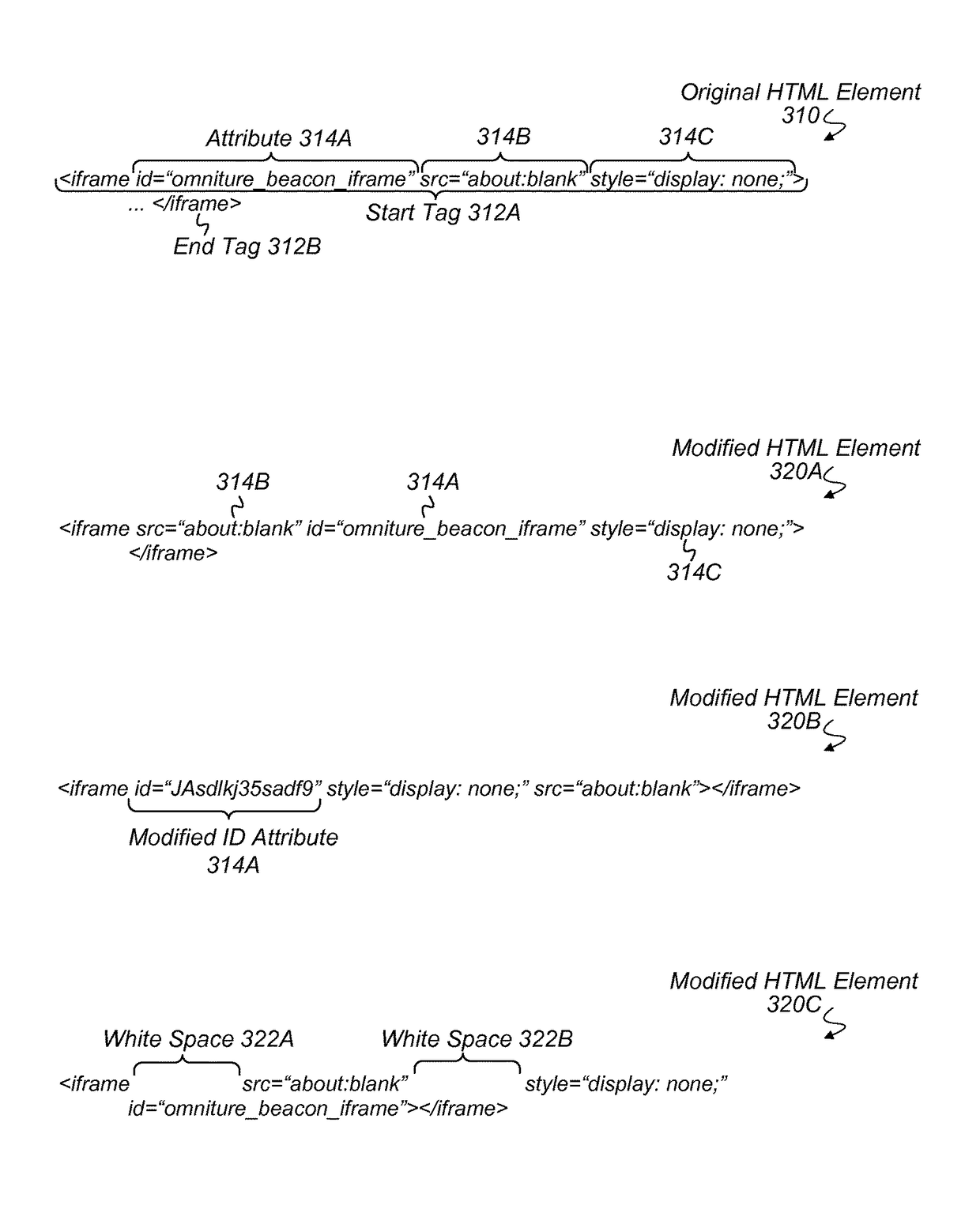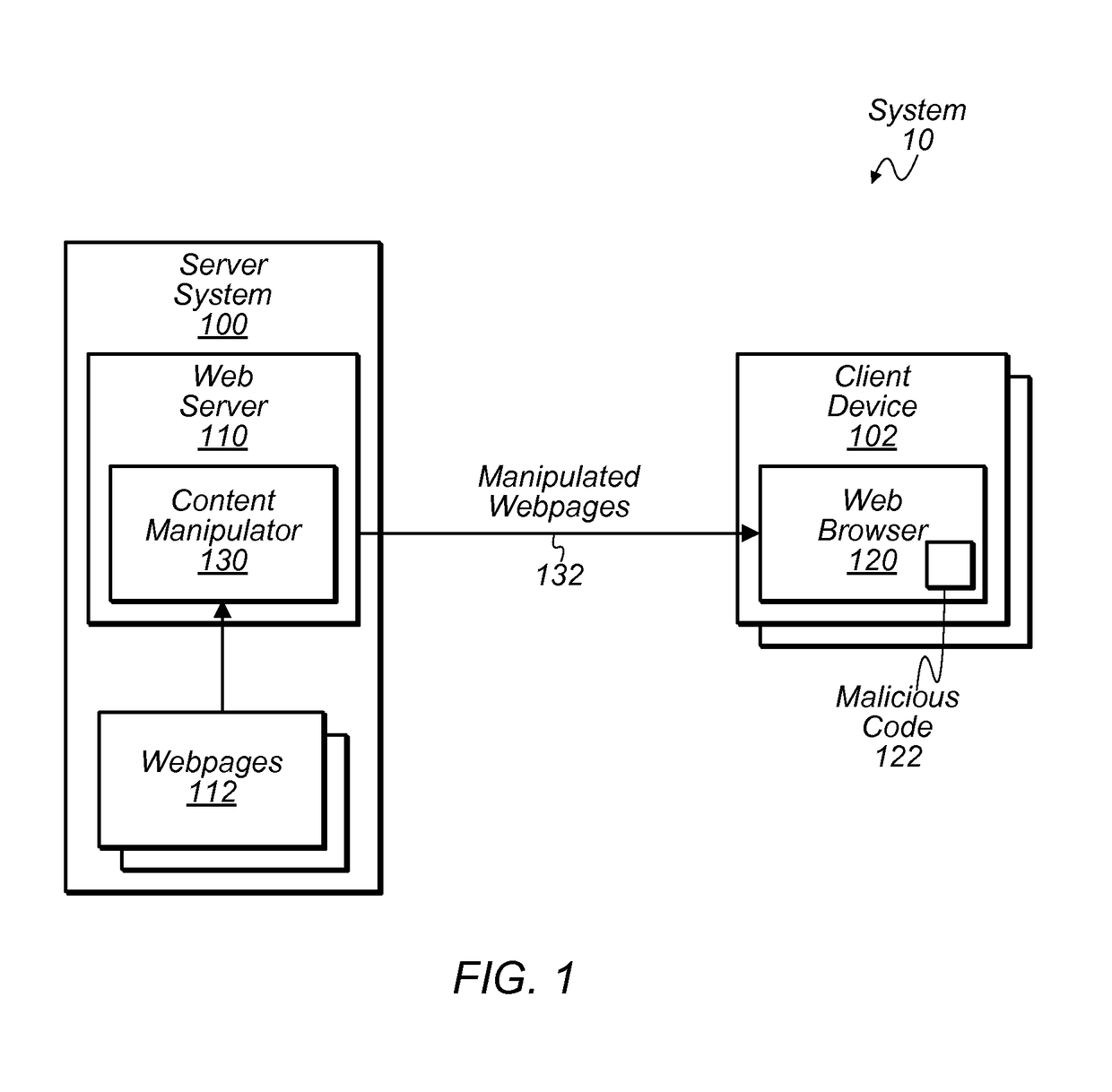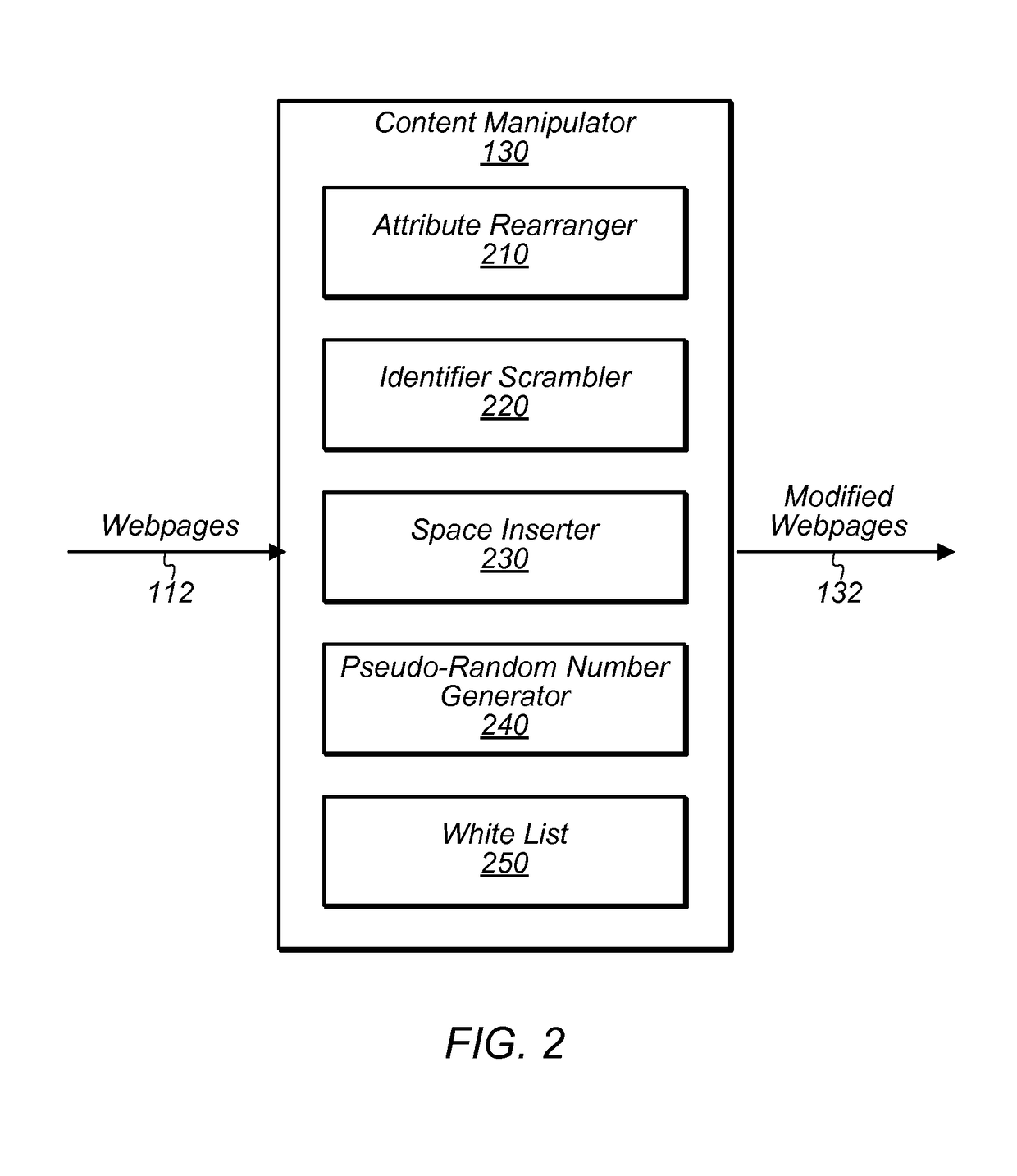Protection via webpage manipulation
a webpage and content technology, applied in the field of webpage manipulation, can solve problems such as slowing computer performance by consuming computer resources
- Summary
- Abstract
- Description
- Claims
- Application Information
AI Technical Summary
Benefits of technology
Problems solved by technology
Method used
Image
Examples
Embodiment Construction
[0016]The present disclosure is concerned with a particular form of malware that attempts to analyze web traffic (e.g., hypertext transfer protocol (HTTP) traffic) being delivered to a web browser on a client device. In some instances, this type of malware may examine webpage content for particular features that can be used to glean information about the content being viewed. For example, the malware may compute a hash value of a webpage and compare it with a hash value of a known webpage. If a match is detected, the malware can potentially determine the identity of the webpage being viewed—i.e., that the user is viewing the known page. As another example, the malware may attempt to identify hypertext markup language (HTML) elements that have multiple attributes specified in a particular ordering. Finding a particular one of these elements may indicate the presence of desired information. For example, this particular element might be located near confidential information about the u...
PUM
 Login to View More
Login to View More Abstract
Description
Claims
Application Information
 Login to View More
Login to View More - R&D
- Intellectual Property
- Life Sciences
- Materials
- Tech Scout
- Unparalleled Data Quality
- Higher Quality Content
- 60% Fewer Hallucinations
Browse by: Latest US Patents, China's latest patents, Technical Efficacy Thesaurus, Application Domain, Technology Topic, Popular Technical Reports.
© 2025 PatSnap. All rights reserved.Legal|Privacy policy|Modern Slavery Act Transparency Statement|Sitemap|About US| Contact US: help@patsnap.com



